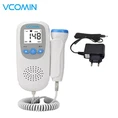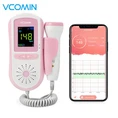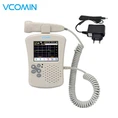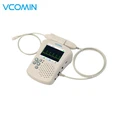For over 15 years, VCOMIN has been a trusted global leader in manufacturing premium ultrasound gel, exporting our products to over 100 countries. We understand the critical role of gel in diagnostic imaging and therapeutic applications. A common practice to enhance patient comfort is the use of gel warmers. This article delves deep into the impact of gel warmers on ultrasound gel properties and addresses crucial safety considerations, drawing on scientific evidence and real-world practice.

1. The Science: How Heat Transforms Gel Performance
Applying heat fundamentally alters the physical properties of ultrasound gel. Understanding these changes is key to optimizing image quality and patient experience:
1.1 Viscosity Reduction & Improved Spreadability:
Cold gel is inherently thicker and more viscous. Warming it significantly reduces viscosity, making the gel thinner and much easier to spread smoothly and evenly over the skin surface. This translates to:
Faster Application: Technicians save valuable time during examinations.
Reduced Gel Usage: Thinner, more spreadable gel means less product is needed per scan to achieve adequate coupling and coverage. A study published in the Journal of Diagnostic Medical Sonography (JDMS) noted that pre-warmed gel can lead to a measurable reduction in the volume used per patient compared to room-temperature gel.
Elimination of "Cold Shock": The primary driver for warming gel is patient comfort. Applying cold gel can cause patients to flinch, tense muscles, or hold their breath, potentially compromising image quality. Warm gel feels far more pleasant and helps patients relax.
1.2 Enhanced Acoustic Coupling (The Core Benefit):
Ultrasound relies on efficient transmission of sound waves between the transducer and the body. Air pockets are the enemy, causing artifacts and reducing image clarity. Warm gel, due to its lower viscosity:
Fills Micropores Better: It flows more readily into tiny skin imperfections, creating a more continuous and homogeneous layer between the transducer and skin.
Reduces Entrapped Air: Thinner gel is less likely to trap small air bubbles during application.
Result: This superior coupling minimizes signal loss and reflection artifacts, leading to clearer, more diagnostic ultrasound images. Research consistently shows that optimal coupling, facilitated by appropriate gel properties (including temperature), is fundamental to image quality.
1.3 Potential Impact on Stability (A Consideration):
While moderate, controlled heating within recommended ranges generally does not harm standard ultrasound gels, prolonged or excessive heat can potentially cause:
Evaporation: Water content in the gel can slowly evaporate over time if the warmer isn't sealed, potentially leading to slight thickening or concentration changes if not replenished.
Formula-Specific Changes: While rare with modern, stable formulations like VCOMIN's, extreme heat could theoretically accelerate the breakdown of certain thickeners or preservatives if temperatures far exceed recommendations. This underscores the importance of using warmers correctly and choosing high-quality, stable gels.
2. Safety First: Mitigating Risks with Gel Warmers
Using gel warmers safely is paramount to protect both patients and staff:
2.1 Temperature Control is Non-Negotiable:
2.1.1 The Ideal Range: Most literature and manufacturer guidelines (including VCOMIN) recommend warming gel to approximately 37°C - 40°C (98.6°F - 104°F). This matches core body temperature, maximizing comfort without risk.
2.1.2 The Critical Threshold:NEVER exceed 52°C (125.6°F). Studies, including those referenced in FDA guidance on thermal burns from medical devices, clearly demonstrate that skin exposure to temperatures above 44°C (111°F) can cause burns, with the severity and time-to-burn decreasing rapidly as temperature increases. At 52°C, significant burns can occur in minutes or even seconds.
2.1.3 he Solution:Choose gel warmers with precise, reliable thermostats and overheat protection mechanisms. Look for models compliant with relevant safety standards (e.g., IEC 60601 for medical electrical equipment).
2.2 Infection Control is Essential: A warm, moist environment can promote bacterial growth if not managed correctly.
2.2.1 Sealed Containers are Mandatory: Gel should only be warmed in its original, sealed bottle or in dedicated, cleanable warmer wells designed to prevent contamination. NEVER pour bulk gel into an open warmer reservoir. This practice has been linked to outbreaks of healthcare-associated infections (HAIs) in documented case studies.
2.2.2 Single-Use Principle: Once a bottle is opened and placed in a warmer or used on a patient, it becomes single-patient use. Do not return unused gel from a warmed bottle to a larger stock container or reuse it on another patient.
2.2.3 Regular Cleaning: Follow the warmer manufacturer's instructions meticulously for cleaning and disinfecting all external surfaces and any removable parts that contact gel bottles.
2.3 Gel Compatibility Matters: Not all gels are formulated equally.
2.3.1 Use Gel Designed for Warming: Ensure your ultrasound gel is explicitly labeled as safe and suitable for use in gel warmers. VCOMIN gels are rigorously tested for stability under recommended warming conditions.
2.3.2 Avoid Ad-Hoc Heating: Never use microwaves, hot water baths, or heating pads to warm gel. These methods create dangerous hot spots and offer no temperature control, posing a severe burn risk and potentially degrading the gel.
3. Best Practices for Optimal & Safe Gel Warming
3.1 Select the Right Warmer: Invest in a medical-grade warmer with precise temperature control (37-40°C), overheat protection, and a design that accommodates sealed gel bottles.
3.2 Use Compatible, Sealed Gel: Only warm VCOMIN gel (or other manufacturer-approved gel) in its original, intact, sealed container.
3.3 Monitor Temperature: Periodically verify the warmer's output temperature using a calibrated thermometer. Don't solely rely on the unit's display.
3.4 Rotate Stock: Don't keep the same bottle in the warmer indefinitely. Follow a "first in, first out" system based on the gel's expiration date and your typical usage.
3.5 Label Clearly: Once a sealed bottle is opened (either for warming or direct use), label it with the date and time of opening. Discard according to your facility's policy (typically within a single shift or as per manufacturer instructions).
3.6 Prioritize Cleaning: Integrate warmer cleaning/disinfection into your daily and weekly environmental hygiene routines.
4. The VCOMIN Advantage: Gel Performance Engineered for Safety
At VCOMIN, we engineer our ultrasound gels with both performance and safety in mind. Our formulations are:
4.1 Optimized for Warming: Stable within the recommended temperature range (37-40°C), maintaining excellent acoustic coupling and spreadability when warmed correctly.
4.2 Microbiologically Tested: Produced under stringent quality control to ensure low bioburden from the start.
4.3 Compliant: Meeting relevant international standards for ultrasound coupling gels.
4.4 Available in Safe Packaging: Supplied in bottles designed for safe warming practices.
5. Elevate Your Imaging Experience Safely with VCOMIN
Explore VCOMIN premium range of ultrasound gels. Never compromise on quality, patient comfort, or safety. Choose VCOMIN gel – the globally trusted choice for excellence in diagnostic imaging. Get your free sample or consultation today!




